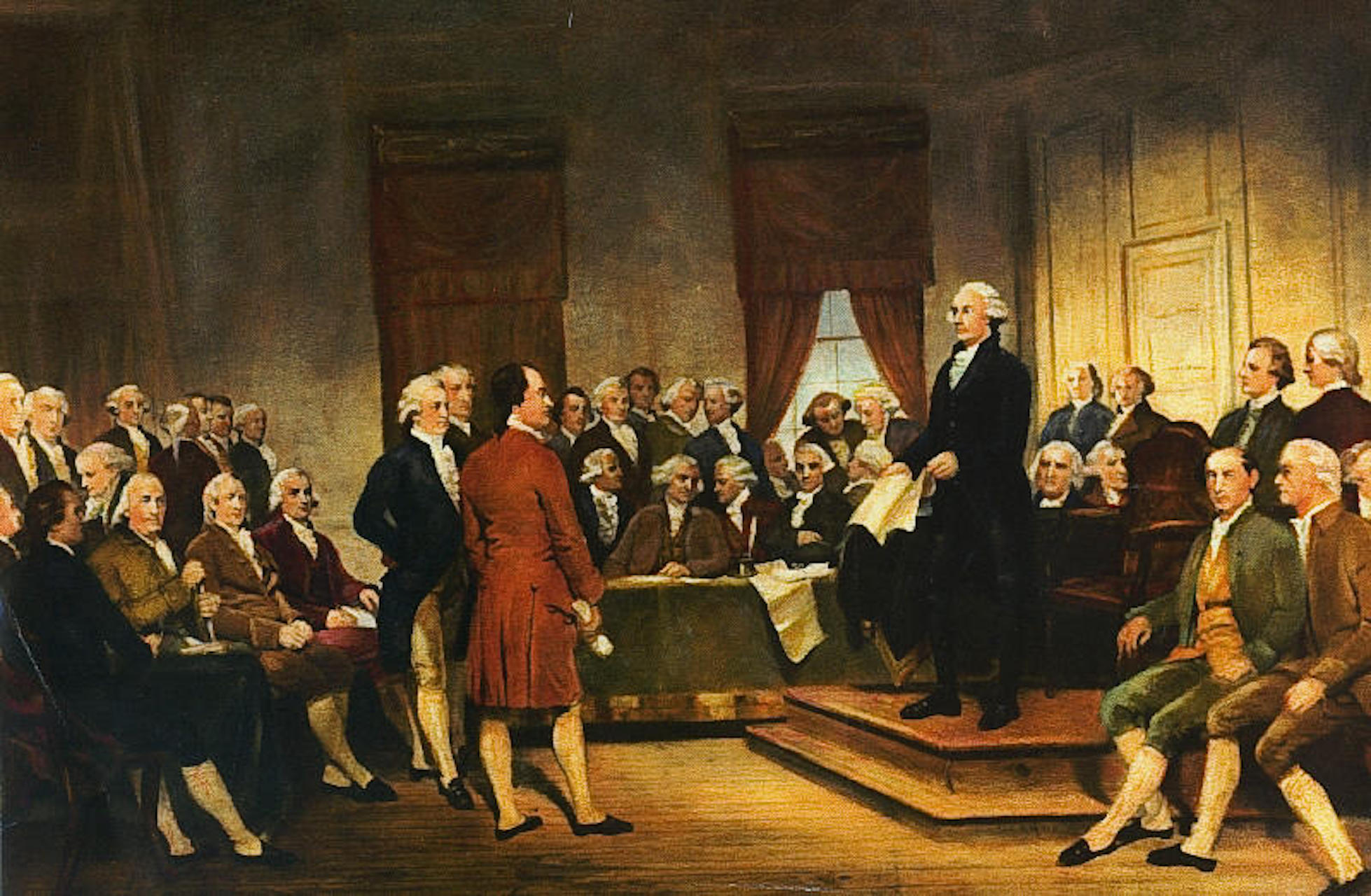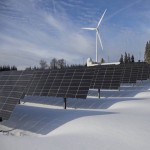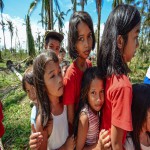PART IV _ Inequality has been on the rise across the globe for several decades. While some countries have reduced the number of people living in extreme poverty, economic gaps have continued to grow as the very richest amass unprecedented levels of wealth.
Worldwide, the numbers are stark. As calculated by Oxfam.org, the ten wealthiest men in the world own more than the bottom 3.1 billion people
According to an analysis by World Inequality Lab, the poorest 50% of the world’s population is responsible for just 12% of global carbon emissions but is exposed to 75% of income losses (relative to what incomes would be in a world without climate change).
By contrast, the world’s richest 10 % accounts for nearly half of all emissions but faces just 3 percent of relative income losses.
Additionally, Oxfam calculates that the wealthiest billionaires are estimated, on average, to be emitting as much as 8,000 times more carbon than the billion poorest people.
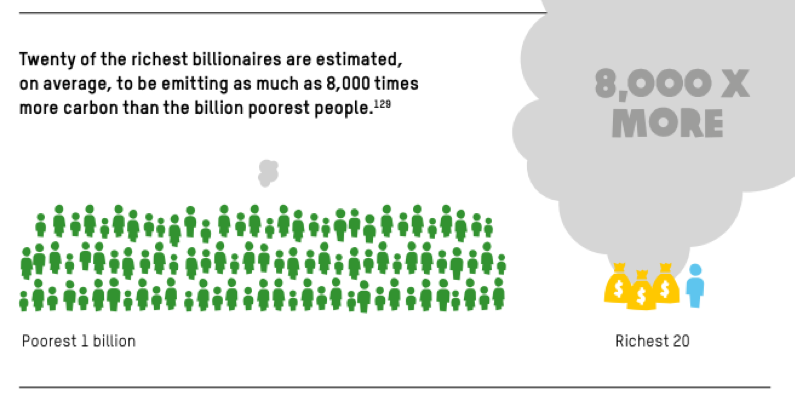
Pollution-induced climate change disproportionately harms the most impoverished and vulnerable populations, particularly those in the Global South. As a result, climate change is already reversing progress made in the fight against inequality. Income and wealth gaps are widening worldwide, social unrest is increasing, and more people are being forced to migrate due to climate-related issues.
Where does the U.S. stand?
The United States is perhaps the most prominent example of growing inequality and contributions to pollution-induced climate change.
Growing Inequality in the U.S.
Among industrial nations, the U.S. is by far the most top-heavy, with much more outstanding shares of national wealth and income going to the wealthiest 1% than any other country.
As such, wealth disparity is on the rise in the U.S. The U.S. Department of Commerce reports that geographic income increased by 40% between 1980 and 2021. This means wealthier areas within the U.S. grew richer while other regions—especially smaller towns and rural areas—have fallen farther behind.
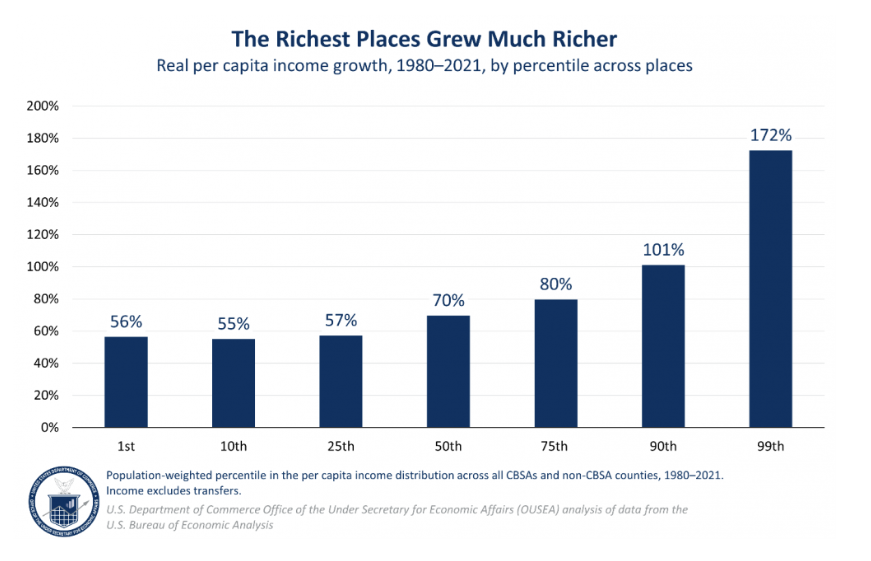
Increasing Emission Production in the U.S. Advances Climate Change and Health Risks
Additionally, the U.S. is responsible for the world's largest share of historical carbon emissions. The nation has released more than 509GtCO2 since 1850 and is responsible for the largest share of historical emissions, contributing 20% of total global emissions, according to a 2021 report. China is a relatively distant second, contributing just 11% of the world's emissions.
Adding to this is the fact that oil and natural gas production in the U.S. has soared in the past decade. Since 2018, the U.S. has been the world's largest oil and gas producer.
Greenhouse gas (GHG) emissions in the United States primarily come from burning fossil fuels (coal, oil, and natural gas) and contribute to increasing environmental and societal risks that jeopardize the general welfare of the people and intrastate commerce activities.
The most significant risk is climate change. GHGs like carbon dioxide (CO2), methane (CH4), and nitrous oxide (N2O) trap heat in the Earth's atmosphere, leading to rising global temperatures. The risks and impacts of climate change include:
- Extreme and Deadly Weather Events - Rising temperatures lead to more frequent and severe weather events, such as hurricanes, wildfires, droughts, and floods. In turn, these events cause damage to infrastructure, disrupt ecosystems, and threaten human safety and lives.
- Sea Level Rise - As the planet warms, polar ice caps, glaciers, and permafrost melt, causing sea levels to rise. This poses a significant risk to coastal communities in the U.S., leading to increased coastal erosion, saltwater intrusion into freshwater sources, and the potential for more frequent and severe coastal flooding. Additionally, melting ice and permafrost releases dangerous microorganisms and more GHG into the atmosphere, creating a negative feedback loop wherein warmer temperatures thaw more ice, releasing more organic material and producing more greenhouse gases.
- Public Health - Climate change has direct and indirect impacts on public health. Increased temperatures can lead to heat-related illnesses, worsen air quality, and extend the range of disease-carrying organisms like mosquitoes, increasing the prevalence of life-threatening diseases among humans.
- Economic Costs - Extreme weather events and damage to infrastructure can result in substantial economic costs. The United States experienced 18 separate climate-related weather disasters in 2022, with the total coming to $165 billion, according to a new report from the National Oceanic and Atmospheric Administration (NOAA). This is only expected to worsen if nothing is done. Additionally, the costs of adapting to climate change, such as building seawalls or relocating communities, will be significant. A recent report by the UN Environmental Programme estimates that adaptation costs could climb to $315–$565 billion by 2050.
- Food Security - Changes in temperature and precipitation patterns can affect crop yields and livestock production. This can disrupt food supply chains, lead to food price increases, and impact the livelihoods of farmers and rural communities.
- Ecosystem Disruption - Climate change can disrupt ecosystems and threaten biodiversity. It can lead to shifts in species distributions, alter migration patterns, and result in habitat loss, which can have a cascade of effects on ecosystems and the services they provide, such as pollination and water purification.
- National Security - Climate change is a matter of national security as it can exacerbate existing conflicts and contribute to instability in regions with resource scarcity, displacement of populations, and competition for water and arable land. This instability can have implications for U.S. security interests and general welfare.
- Energy Supply Disruptions - Climate-related events, such as extreme weather, can disrupt supply chains, including producing and distributing electricity and fossil fuels. This can lead to power outages and energy price volatility.
Is Climate Change and the Declining Quality of Life in the U.S. a Human Rights Issue?
The Universal Declaration of Human Rights (UDHR) is an international document adopted by the United Nations General Assembly that enshrines the rights and freedoms of all human beings and calls out potential negative impacts if these rights are not met.
The Declaration is structured into several sections, including a preamble that outlines its purpose, principles of dignity and freedom, individual rights, civil and political rights, spiritual and public freedoms, social and economic rights, and mutual duties towards society. It encompasses a wide range of rights and responsibilities for individuals and serves as a comprehensive guide to human rights.
Given the rising inequality, declining living standards, and negative impacts of climate change on the general welfare and intrastate commerce opportunities of U.S. citizens, does the nation meet the basic expectations for global human rights, including dignity, equality, safety, social, economic, cultural rights and others constituted by the UDHR?
If not, what could become of the U.S. if the current trajectory of inequality and the negative impacts of climate change are allowed to continue?
Considering the Worst-Case Scenario, What Could Lie Ahead for the U.S.?
Income disparities, inequality, social unrest, and the impacts of pollution-induced climate change are increasing in the United States. These issues affect the daily lives of Americans and people worldwide, fostering a growing sense of global distress.
In a worst-case scenario, the current trajectory is allowed to continue unabated. What could the future hold if significant changes are not enacted? Recent events in other countries and within America's history provide clues as to the potential outcomes.
01. Impacts of Escalating Inequality
There are multiple layers of inequality, including race, gender, wealth, income, healthcare access, and more. A common thread among the disadvantaged groups is constrained access to essential resources and prospects, including barriers to obtaining education, proper healthcare, working capital, fair housing, meaningful work, and other fundamental human rights.
The impacts of inequality are far-reaching and deadly. The stats are sobering. According to Oxfam.org:
- Every day, inequality contributes to the deaths of at least 21,300.
- 3.4 million Black Americans would be alive today if their life expectancy were the same as White people's. Before COVID-19, that alarming number was already 2.1 million.
- By 2030, the climate crisis could kill 231,000 people annually in impoverished countries.
Inequality negatively impacts almost all aspects of human life and limits economic progress. Rising inequality results in more crime and violence, less happiness, and less trust in government and society.
The increasing levels of inequality being experienced today did not happen by chance. They result from structural and systemic policies and political choices that give preference to the privileged and the powerful while disadvantaging underserved and underprivileged people, including the working poor, women and girls, and racial and ethnic minorities, including native and formally enslaved people.
As more global citizens begin to understand the scale and impact of systems of oppression and speak out about the growing inequalities, social unrest will likely continue to rise.
02. Dangers of Rising Social Discontent
The concentration of power and resources in the hands of an elite minority is a recipe for brewing social discontent. Frustration from inequitable wealth distribution and limited upward mobility can ignite public outrage and erode faith in governance systems.
Left unchecked, this discontent could culminate in widespread turmoil, civil unrest, and fragmented social bonds. Examples of this are plentiful in recent events from France and Spain in Europe to Hong Kong and India in Asia; from Chile, Colombia, and Bolivia in Latin America to Lebanon, Iran, and Iraq in the Middle East.
“The match may differ, but the kindling has (in most cases) been furnished by the gross inequality produced by global capitalism.”
For example, recent increases in subway fares in Chile were the tipping point that catalyzed protests. Despite Chile’s wealth and status as a member of the Organization for Economic Cooperation and Development (OECD) for prosperous nations, it has high levels of inequality.
Working Chileans have grappled with rising utility costs, stagnant wages, and paltry pensions. The increase in public transport fares was the last straw, and Chileans took to the streets to protest and register their fury.
What happens if the growing social unrest expressed in protestors' cries goes unheard by their governments?
History tells us that significant and unabated rises in inequality often lead to social and political revolutions. In his book, The Great Leveler, Walter Scheidel traces the global history of inequality from the Stone Age to today, showing that it often leads to mass violence and catastrophe. But to what end?
Marxists believe they know the answer. Marxism posits that the struggle between social classes—specifically between the bourgeoisie, capitalists, and the proletariat, or workers—is the core of economic relations in a capitalist economy and proves that capitalism is inherently flawed and will ultimately fail.
Marxism portrays capitalism as merely an evolutionary step in a historical progression of economic systems that follow one another in a natural sequence. Marxism theorizes that the inherent inequalities and exploitative economic relations between classes will inevitably lead to a revolution in which the working class rebels against the bourgeoisie, takes control of the means of production, and abolishes capitalism.
After the revolution, private ownership of the means of production would be replaced by collective ownership, first under a socialist society and then under communism.
If nothing is done, what lies ahead for the future of America?
03. Irreversible Climate Consequences
The alarming correlation between concentrated wealth and elevated carbon emissions paints a grim picture of our planet's future.
The World Economic Forum’s 2023 Global Risks Report places failure to mitigate climate change in the top five global threats within the next two years and the number one global threat in 10 years, followed by an inability to adapt to climate change.
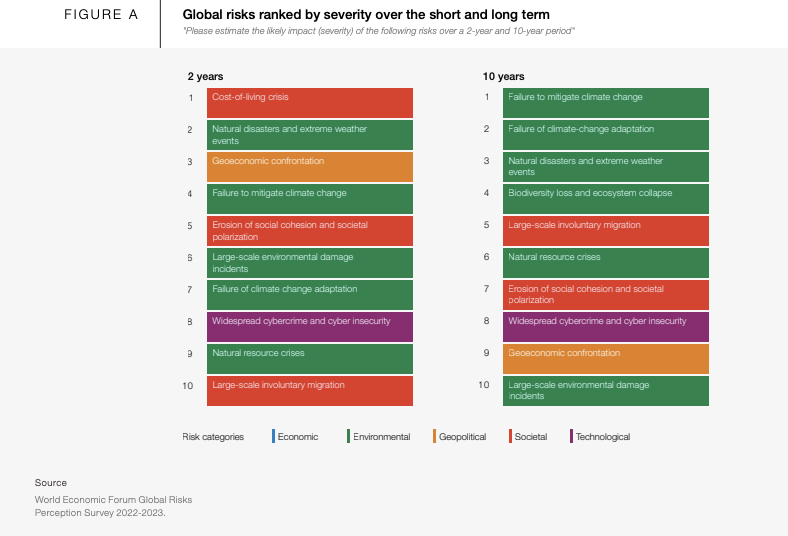
The lack of profound, concerted progress on climate targets has exposed the divergence between what is scientifically necessary to achieve net zero and what is politically feasible.
There is also growing recognition that not only the pace of the transition but also effectiveness and integrity matter. While some countries have made disclosure mandatory, much of the corporate world in developed nations has not yet started to assess or manage their climate risks.
For example, the Securities Exchange Commission (SEC) in the U.S. issued a proposal in March 2022 that would require public companies to report climate-related risks and emissions data, including emissions that come from a company's supply chain. However, the proposal has been stalled due to backlash from American corporations and government officials who say the proposed rule is overly onerous and costly and that the agency has overstepped its mandate.
According to a recent OECD report, many countries have met just 25% of the targets for which performance can be gauged. Additionally, negotiations at COP27 failed to reach a much-needed agreement to phase out all fossil fuels.
Given the current trajectory and slow pace of change, the Intergovernmental Panel on Climate Change (IPCC) believes the chance of breaching the 1.5°C target by as early as 2030 stands at 50%.
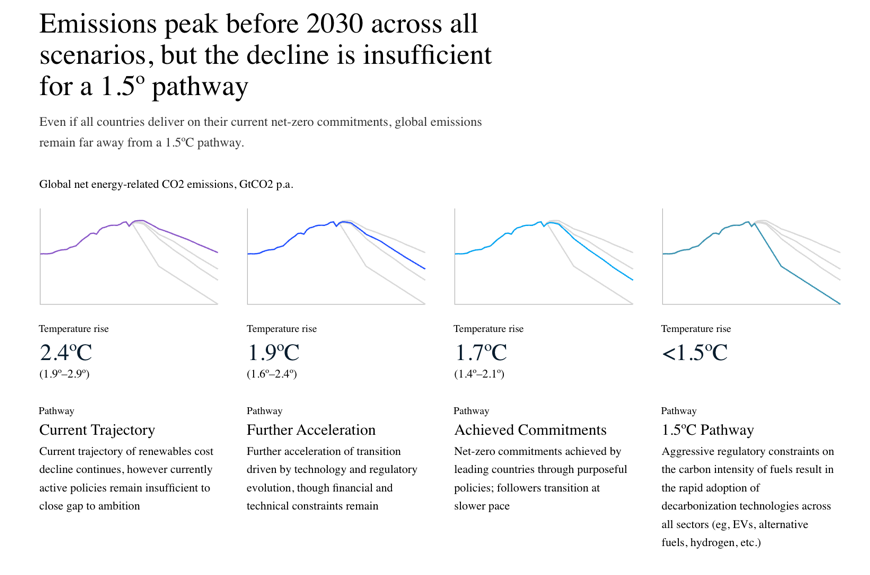
Additionally, current commitments made by the G7 private sector suggest an increase of 2.7°C by mid-century, way above the goals outlined in the Paris Agreement.
Unabated climate change results in social, economic, and human disasters. Data presented to COP27 shows that pollution-induced climate change is expected to:
- Cause 3.4 million deaths per year by the end of the century,
- Increase biodiversity loss leading to ecosystem collapse,
- Increase the number of high wildfire danger days by 8.5% at 1.5°C, but could increase threefold if no action is taken,
- Increase exposure to life-threatening heatwaves by 350% for vulnerable age groups at 1.5°C, but will jump to 2510% at 2°C,
- Reduce hours of heavy physical labor by 20% by the end of the century,
- Increase in the number of countries with conditions suitable for Dengue Fever by 22% by the century-end.
According to a group of leading scientists, we may have already passed several critical climate tipping points within Earth's interconnected climate systems, which could increase the risks of triggering a cascade of irreversible changes, leading to a less habitable planet.
Without significant policy change, investment, and decisive action to curb emissions and promote sustainable practices, the interplay between climate change impacts, biodiversity loss, food security, and natural resource consumption will accelerate ecosystem collapse, threaten food supplies and livelihoods in climate-vulnerable economies, amplify the effects of natural disasters, and limit further progress on climate mitigation.
04. Loss of Talent and Resources
The term "brain drain" was coined by the Royal Society to describe the emigration of "scientists and technologists" to North America from post-war Europe.
Although the term initially referred to technology workers leaving a nation, the meaning has broadened to the departure of educated, professional and specialty skilled labor from one country, economic sector, or field for another, usually for better pay or living conditions.
While the phrase may be relatively recent, the practice of skilled laborers seeking better living conditions is not.
For example, the 1562–1598 French Wars of Religion—a period of civil infighting and military operations primarily between French Catholics and Protestants (Huguenots)—led to widespread persecution of the Huguenots.
Many fled the persecution in France and entered Switzerland, taking their clock and watchmaking skills to Geneva. There, goldsmiths and enamellers, who had expertise in beautiful design and craft, worked with the skilled Huguenots with the knowledge and technique to create clocks and watches.
The influx of skilled refugees helped transform the reputation of Geneva into a city known for its high-quality watchmaking.
Brain drain is present in the global battle for talent today, especially for tech, innovation, and digital transformation.
In America, a convoluted and highly politicized immigration system has put significant roadblocks in the way of foreign-born founders and minority entrepreneurs from entering and finding success in the country.
At the same time, dozens of other countries are wooing foreign-born founders. Roughly 25 countries, including Australia, Germany, Portugal, and the UK, have set up programs that offer startup visas and other perks to help attract foreign-born entrepreneurs.
“There are more places around the world where entrepreneurship has taken off... so founders have more choices. And to the extent that [the United States’] immigration policies are not so welcoming, people don’t want to come.” - Jerry Yang (Taiwan) : Net worth $2.4 billion, Yahoo.
Brain drain can also take on other forms.
According to the U.S. Bureau of Labor Statistics, 71.6 million people left their jobs from April 2021 through April 2022 as part of what is now being called the Great Resignation. Those who resigned cited wage stagnation amid the rising cost of living, limited opportunities for career advancement, hostile work environments, lack of benefits, inflexible remote-work policies, and long-lasting job dissatisfaction as their reasons for stepping away.
Overall, employee burnout from "hustle culture" and constantly being asked to do more with fewer resources at work has led to the recent trend of “quiet quitting.” This is another form of brand drain and refers to doing the minimum requirements of one's job and putting in no more time, effort, or enthusiasm than necessary. This is similar to the workplace phenomenon in China called, "lying flat.”
Finally, an increase in American citizens giving up their U.S. citizenship is another contributor to the loss of talent in the U.S.
In 2022, roughly 1 in 4 American expatriates said they are "seriously considering" or "planning" to renounce their U.S. citizenship, according to a Greenback Expat Tax Services survey.
The top reason why expats want to drop their U.S. citizenship is the burden of being required to file U.S. taxes while living abroad. Only the U.S. and Eritrea, a country in northeast Africa, tax people based on citizenship rather than residency. For most countries, you aren't taxed in that country if you are a citizen but don't reside there.
Rising inequality, along with prolonged social and economic unrest, taxation, and convoluted immigration policies, have reduced the overall availability and engagement of the U.S. workforce.
Entrepreneurs and innovators leave for environments with programs that will support them and help their businesses grow while the remaining workforce is scaling back their efforts.
How can the U.S. keep up as the rest of the developed world makes significant progress toward digital transformation?
05. Global Isolation
The United States, historically known for its global economic prowess and influence, could find itself on a path toward increased global isolation.
One significant factor is the growing trend of countries seeking to decouple from the U.S. economy. This includes nations diversifying their currency reserves away from the U.S. dollar, which has long served as the world's primary reserve currency.
For example, in early 2023, China, Russia, Saudi Arabia, the United Arab Emirates, and even Brazil started making trades in other currencies: The Chinese Yuan and the Russian ruble. This was a straightforward challenge to the U.S. dollar's central position. The move could weaken the dollar's global dominance, diminishing America's economic leverage.
Additionally, the U.S. has a diminishing role in global energy markets. With the shift towards renewable energy sources and the development of domestic energy resources in various countries, the world's dependence on U.S. gas and oil is expected to decrease. Investments in oil and gas are projected to stay stable in absolute values. However, their global energy investment mix share is projected to decrease from 54% in 2021 to 36% in 2035.
Furthermore, a significant shift in U.S. agricultural dynamics adds to the nation's growing isolation. For the first time in 2023, the U.S. has become a net agricultural food importer rather than a net exporter.
This transformation is partly due to changing consumer preferences and climate-related domestic agricultural production challenges. As the U.S. becomes more reliant on outside food systems and imports, its food security may become increasingly vulnerable to global supply chain disruptions, making it more susceptible to international pressure and economic volatility.
In this evolving landscape, the United States is challenged to adapt to a world where its economic and agricultural roles are shifting.
How Much of this Economic Imbalance Correlates with Too Big to Fail?
In the evolving global landscape, the United States finds itself at a crossroads, grappling with significant shifts in its economic and agricultural roles. These changes prompt us to consider the "Too Big to Fail” concept and its correlation with the nation's economic imbalance.
"Too Big to Fail" refers to entities, often large financial institutions, that are deemed so vital to the functioning of the economy that their failure could have catastrophic consequences. While this concept has traditionally been applied to financial institutions, it can also be extended to the broader economic structure of a nation.
In the case of the U.S., where individual liberty and the pursuit of the common good are fundamental values, it's crucial to discuss whether citizens can exit a union that fails to address their economic well-being adequately.
However, the challenge lies in maintaining national unity while addressing economic disparities. If these disparities persist without adequate measures to promote the general welfare, they can weaken the nation's cohesion. Social and economic divisions can lead to further political polarization and erode the shared sense of purpose that underpins a strong and resilient society.
Furthermore, historical injustices, such as treating enslaved individuals as property during the Constitution's ratification, are stark reminders of the ongoing need for societal progress and the expansion of rights to all, especially marginalized groups. The quest for justice and inclusivity is integral to the nation's evolution.
In the modern context, instances of individuals renouncing their American citizenship due to economic or social discontent highlight the delicate balance between individual rights and the state's responsibilities. This underscores the necessity of responsive and inclusive governance that prioritizes the well-being of all its citizens to prevent such situations from arising.
Addressing economic disparities and ensuring the well-being of all citizens is not solely a matter of social justice; it is also a fundamental requirement for any nation's unity and resilience in the face of domestic and global challenges.
SUMMARY
The urgent need for action is undeniable in a world grappling with profound wealth imbalances and the far-reaching consequences of climate change.
The concentration of economic power, coupled with environmental degradation, threatens global equality and stability. As we confront the pressing issues of income inequality and climate change, it is essential for policymakers to prioritize inclusive prosperity.
The United States, with its influence and resources, stands in a unique position to lead the way toward a more sustainable and equitable future, setting an example for nations worldwide and demonstrating that a fairer, more sustainable future is not just a dream but an achievable reality.
On this International Day of Peace, Ready Player Institute explores how inequality and pollution-induced climate change can disrupt peace and prosperity. By upholding the principles of liberty, justice, and the common good, the United States can navigate these shifts and continue to evolve as a strong and cohesive nation.
ABOUT READY PLAYER INSTITUTE
Ready Player Institute is a 501(c)(3) non-profit organization addressing disparities in underserved and vulnerable regions, including LATAM, the Caribbean and Pacific Islands.
Their mission is to foster greater diversity and inclusion within research and entrepreneurship, all while harnessing innovation and technology to drive sustainable solutions.
Your contribution to Ready Player Institute through Uprise will directly support individuals from minority backgrounds in underserved regions. These funds will enable them to access essential training and laboratory programs aimed at digitizing tangible assets, improving educational opportunities, advancing healthcare services, optimizing the food supply chain, and addressing the pressing issue of climate change.
Ready Player Institute collaborates closely with Project DARP, Ready Player Infrastructure, and Ready Player Ventures, forming a comprehensive network dedicated to positive change and innovation.
Your support can make a meaningful difference in their efforts to empower underserved communities and drive progress in these critical areas.
🌍 Join Us in Making a Difference! 🌱
Do you have innovative ideas, breaking news, groundbreaking research, or expert insights that can help tackle climate change, environmental pollution, and social inequity? Share your voice with the world and be a catalyst for positive change. Together, we can create a better future!
Contact us today on publishing@readyplayerinstitute.org.
